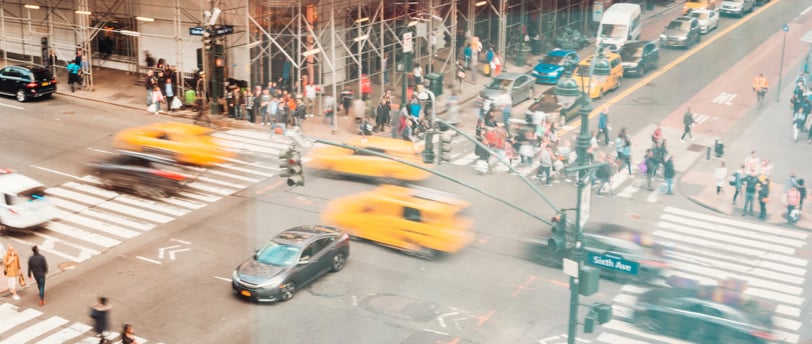From Congestion to Connection: Rethinking Urban Mobility
TRANSPORTATION


As cities grow, so do the challenges of mobility. Traffic congestion, long commutes, and inadequate public transport systems hinder urban living, affecting economic productivity, environmental health, and residents' well-being. Urban planners and policymakers are reimagining mobility to shift from congestion to connection—creating efficient, sustainable, and inclusive transportation systems that meet the needs of all city dwellers.
The Problem of Urban Congestion
Urban areas worldwide are grappling with gridlock caused by:
Car Dependency: Cities designed around automobiles leave little room for other modes of transport.
Outdated Infrastructure: Aging transit systems fail to meet the needs of growing urban populations.
Urban Sprawl: Expanding cities force residents to travel farther, increasing reliance on private vehicles.
Congestion impacts everyone:
Economic Costs: Lost productivity and increased transportation costs.
Environmental Harm: High greenhouse gas emissions from idling vehicles.
Health Risks: Air pollution and stress caused by long commutes.
The Vision: Connected Cities
Rethinking urban mobility means designing systems that prioritize connection over congestion. These systems:
Integrate multiple modes of transport: Seamlessly connecting trains, buses, bicycles, and walking paths.
Leverage technology: Using data to optimize routes and reduce inefficiencies.
Support sustainability: Reducing carbon footprints through green transport options.
Key Strategies for Rethinking Urban Mobility
1. Expanding Public Transit Systems
High-capacity public transit, such as subways, light rail, and buses, can reduce reliance on private cars.
Bus Rapid Transit (BRT) systems: Dedicated lanes and express services provide reliable alternatives to cars.
Case Study: Bogotá’s TransMilenio BRT system moves millions efficiently while reducing emissions.
2. Promoting Active Transportation
Encouraging walking and cycling not only eases congestion but also improves public health.
Pedestrian-Friendly Design: Expanding sidewalks, creating car-free zones, and ensuring safe crossings.
Cycling Infrastructure: Adding bike lanes, bike-sharing programs, and secure parking facilities.
Case Study: Copenhagen, Denmark, where over 60% of residents commute by bike.
3. Embracing Smart Mobility
Technology can revolutionize how people move through cities.
Mobility-as-a-Service (MaaS): Apps that integrate multiple modes of transport, like ride-sharing, e-scooters, and public transit.
Real-Time Data: GPS and AI help manage traffic flow and optimize transit schedules.
Autonomous Vehicles (AVs): Future fleets of AVs could reduce congestion by increasing road efficiency.
4. Transitioning to Low-Carbon Transport
To combat climate change, cities must embrace electric and renewable-powered transport.
Electrification: Expanding electric vehicle (EV) charging infrastructure and incentivizing EV adoption.
Green Public Transit: Electrified buses and trains powered by renewable energy sources.
Case Study: Shenzhen, China, where the public bus fleet is entirely electric.
5. Redesigning Urban Space
Transit-Oriented Development (TOD): Concentrating housing, jobs, and services around transit hubs to minimize travel distances.
Shared Streets: Flexible spaces where cars, bikes, and pedestrians coexist safely.
Case Study: Barcelona’s "superblocks" reduce traffic and reclaim public space for pedestrians.
The Role of Equity in Mobility Planning
For mobility systems to truly connect cities, they must be inclusive.
Affordable Transit: Ensuring public transport is accessible to low-income residents.
Universal Design: Building infrastructure that accommodates people with disabilities and the elderly.
Addressing Transit Deserts: Expanding transit options in underserved neighborhoods.
Examples of Cities Leading the Way
1. Paris: 15-Minute City
Paris is transforming into a city where all essential services are within a 15-minute walk or bike ride, reducing the need for cars.
2. Singapore: Smart Traffic Management
Singapore’s electronic road pricing system and real-time transit data have minimized congestion and improved travel efficiency.
3. Medellín: Cable Cars for Accessibility
Medellín, Colombia, uses cable cars to connect hillside neighborhoods to the city center, providing mobility for underserved communities.
Barriers to Change
While the vision of connected cities is compelling, challenges remain:
Funding: Large-scale transit projects require significant investment.
Resistance to Change: Car-centric cultures may resist new mobility solutions.
Coordination: Integrating multiple modes of transport requires extensive planning and collaboration.
The Future of Urban Mobility
Cities that prioritize connectivity over congestion are shaping a sustainable, inclusive future. Emerging trends include:
Hyperloop Technology: High-speed, low-impact transit connecting urban hubs.
Shared Mobility Models: Autonomous car fleets offering flexible, on-demand rides.
Micro-Mobility Solutions: Expanding e-scooters and shared bikes for short trips.
With innovative planning and robust investment, cities can create systems where mobility is efficient, sustainable, and accessible to all.
Conclusion
Rethinking urban mobility from congestion to connection is essential for creating livable cities in the 21st century. By embracing sustainable, inclusive, and technology-driven solutions, urban planners can ensure that transportation systems meet the needs of growing populations while addressing climate and equity concerns.
Connected cities are not just about moving people efficiently—they are about creating vibrant, resilient communities where everyone thrives.

